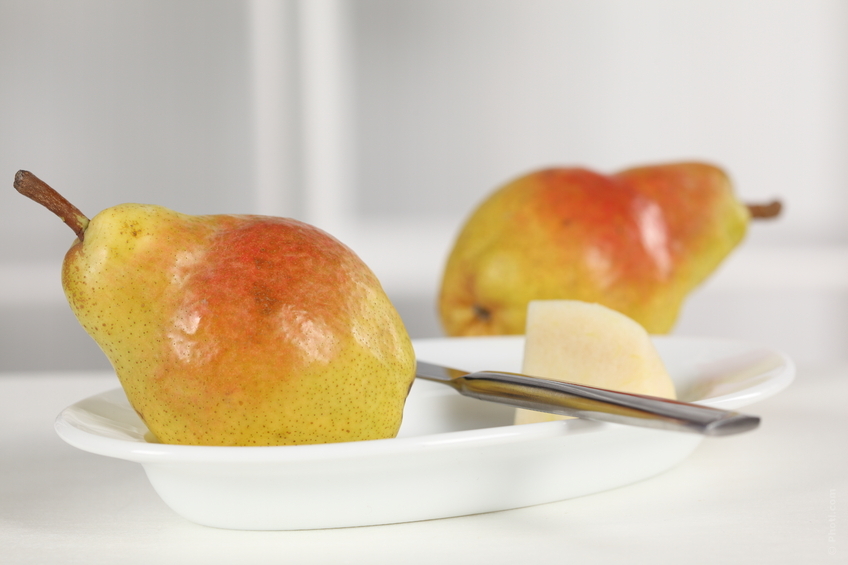





In case you missed the chill in the air, the abundance of seasonal autumn produce – crisp apples, colorful squash, and pears should tell you that winter is just around the corner. Why pears? Why now? They are a truly versatile, luscious, flavorful and healthful fall fruit. Most North American pears are grown in Oregon and Washington. Though you can find some variety from August through May as some type is harvested year-round, true ‘pear season‘ begins in September/October. That is when they are most abundantly available, less expensive and flavorful. In case there is any doubt – just look at the range of skin colors among pear varieties. They match the gorgeous hues of the fall leaves: gold, russet, mauve, pale green, ginger, crimson and more.
Not a fan? Perhaps it’s because you’ve always eaten canned pears or rock hard, out-of-season green Anjou pears which are available almost year-round in supermarkets. It’s time to broaden your horizons and enjoy new varieties…as there are many. The first pear varieties to explode on the scene in September are Bosc (russet-colored and firm even when ripe), Bartlett (green and red, ultra juicy) and Comice (green with brown flecks, firm flesh). By October you can find Anjou (red and green), Concorde (pale green), Forelle (green skin spotted with red flecks) and Seckel (shiny skin, often mostly a muted green color with a patch of reddish-orange) appear…and that’s hardly a comprehensive list!
Some varieties might be harder to find in your region than others but make it your goal to try at least one new variety this season. You’ll find in-season pears to offer a firm but juicy texture and flavors that range from very sweet to tart. Use this as a guideline, but keep in mind most pears, as with many fruits and vegetables, can be eaten raw or cooked (except Bartlett).
Best for eating raw: Bartlett (soft, lose their shape when cooked), Comice (also juicy, very sweet, may not cook well), French butter, Anjou and Asian (‘crisp’ flesh, like an apple, good for dicing and adding to salads or using in tarts or crisps)
Best for cooking: Bosc, seckel (tiniest variety, very firm, slightly acidic) and forelle (sweet-tart, snacking or cooking)
The pear is a relatively low-calorie fruit. One medium-sized fruit, or about 175 grams, offers about 95 calories. Calories per fruit vary according to variety and size. They are fat, cholesterol and sodium-free but high in dietary fiber, providing roughly 6 grams per medium-sized fruit. Pears (and apples) contain an appreciable amount of soluble fiber, which may help to lower cholesterol levels and stabilize blood sugar levels (slows the release of glucose into the bloodstream).
Choose firm, blemish-free, stem-on pears with unbroken skin. They ripen quickly and bruise very easily so handle with care. Store them at room temperature until they reach desired ripeness. Though you can store them in the refrigerator for a couple of days to ‘hold’ them at a certain ripeness, pears are best, and juiciest, when eaten at room temperature. They are ripe when the flesh ‘gives’ gently when pressed at the neck of the fruit.
 follow:
follow: